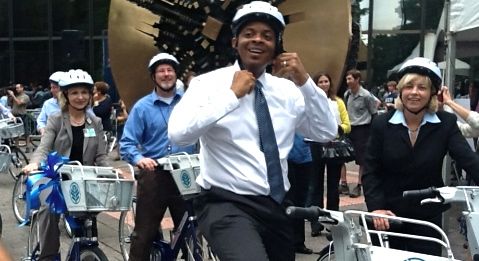“We moved safely through these cities the way so many residents routinely do – on a bike. And we looked at how data and technology are shaping transportation systems for the better,” says Anthony Foxx , U.S. Transportation Secretary after he visited Copenhagen, Oslo and Amsterdam.
The three cities is described by the Minister of Transport as “Smart Cities”, with a transport, especially cycling, many cities in the US would like to emulate.
The trip focused on sharing best practices in bicycle and pedestrian safety, and the U.S. DOT Smart City Challenge as part of an ongoing effort to learn from international partners about innovative ways to meet the transportation challenges of the future.
“I’m excited to put these ideas into practice, and continue the conversation in the United States about making our neighborhoods more inclusive and multi-modal, and to improve access to economic opportunity,” says Anthony Foxx.
“Copenhagen, Amsterdam, and Oslo are considered some of the smartest cities in the world. They face many of the same challenges as cities in the United States, including: rapid growth, urbanization, congestion, climate change, increased freight traffic, and risks to pedestrian and bike safety,” says Secretary Foxx.
“Cities are the locus of innovation; that’s clear in Copenhagen, Amsterdam and Oslo,” said Portland Mayor Charlie Hales, who traveled with the Minister of Transport. “It was an honor to travel with Secretary Foxx and learn about some of the most advanced bicycle and pedestrian infrastructure systems in the world. Cities have the tendency to share information and successes – that’s how we lead. I’m excited to take this information back to Portland and replicate these transportation innovations.”
During his visit, Secretary Foxx also signed a Memorandum of Cooperation (MOC) with each of the three countries, formalizing cooperation with each nation on a range of transportation priorities, including automated and connected vehicles, smart cities, and multi-modal urban mobility.
caa


























